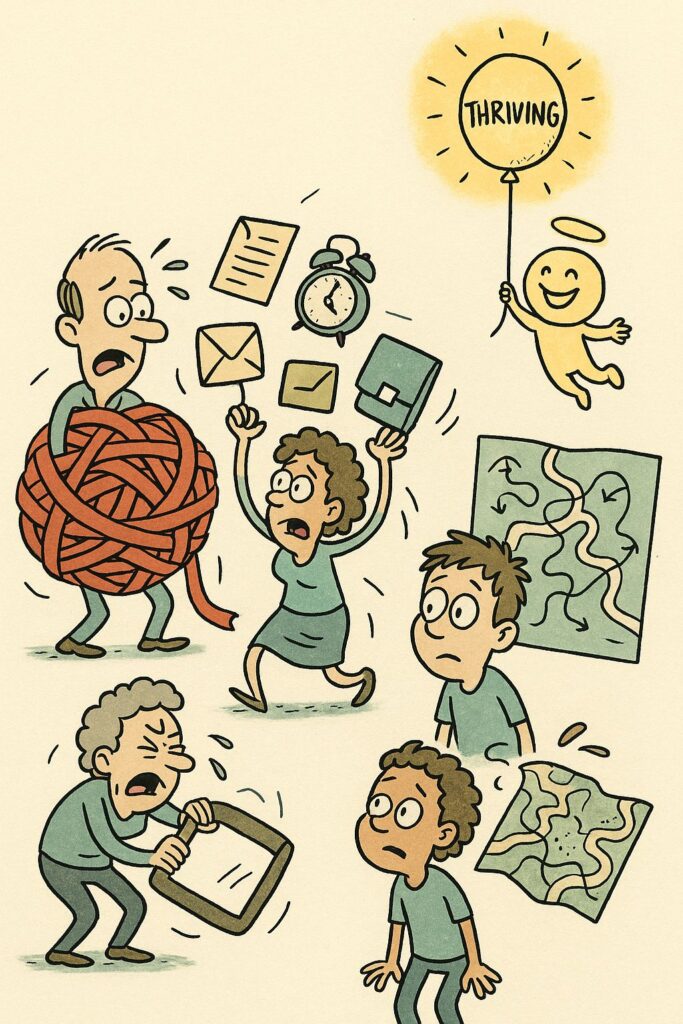The World’s Mood, by the Numbers
Here’s some optimism you don’t often see in the headlines: According to Gallup’s latest global analysis, more people than ever are rating their lives as genuinely satisfying. The median percentage of adults who say they’re “thriving” across 142 countries has hit 33% in 2024 – an all-time high since Gallup began tracking. This isn’t just a win for a handful of wealthy countries; improvements are popping up across regions, ages, and genders.
But what does it mean to be thriving, and why does it matter?
How Gallup Measures Wellbeing: Beyond Rich or Poor
Gallup uses its Life Evaluation Index to sort people into three buckets:
- Thriving: You rate your present life at 7 or above, and your future at 8 or above (on a 0–10 scale).
- Struggling: Your ratings land in the middle – think: more stress, more worry, less optimism.
- Suffering: Both current and future life are a 4 or below. This often comes with pain or limited resources.
Right now, only 7% of adults globally are “suffering” – matching the lowest rates since 2007. That’s not just a blip; it hints at a broader cultural shift toward thinking about quality of life, not just paychecks or GDP.
The Secret Ingredients: Social Connection and Lifestyle Tweaks
Gallup’s findings are echoed by the World Happiness Report, which consistently ranks Nordic countries at the top – not because they’re the richest, but thanks to robust social safety nets and tight-knit communities. The research is clear: Support networks and a sense of belonging are just as critical as financial stability.
Meanwhile, new wellness indices are pushing policymakers to think beyond economic growth. Tiny lifestyle habits – like regular dental visits, Gallup notes – are surprisingly powerful predictors of feeling good about your life.
At work, the picture is mixed. Half of U.S. employees say they’re thriving, but that’s actually a record low. Engagement and support at work matter, but clearly, there’s room to grow.
Resilience and Realities: Happiness in a Bumpy World
It’s easy to forget: These wellbeing gains come despite years of pandemics, economic jitters, and global conflict. The data suggests humans are adaptable – finding ways to build purpose and meaning even when times are tough. Holistic health, flexible work, and digital wellness are all part of this evolving picture.
Still, challenges remain. Loneliness is rising for certain groups, like young men in the U.S. And while global wellbeing is up, most people are still “struggling” rather than thriving. In some Western countries, happiness has declined since 2010, even as places like Costa Rica and Mexico have surged ahead.
What About Addiction Recovery?
This focus on wellbeing echoes findings in addiction research: The deepest recoveries often come not just from willpower, but from big mindset shifts – rethinking purpose and priorities. Social connection helps, but sustained recovery tends to hinge on reshaping how people see themselves and their future, not just their social network.
The Takeaway – and a Tiny Experiment
There’s real progress: The world is trending toward higher wellbeing, even if most of us aren’t quite “thriving” yet. Governments and health experts are taking note, broadening their focus from economic stats to include life satisfaction, social ties, and everyday habits.
A quick experiment for your own wellbeing: This week, reach out to someone you haven’t talked to in a while – a friend, a coworker, or even a neighbor. Ask about something meaningful to them. See if that small act of connection shifts your own sense of satisfaction.
The data shows: It’s the everyday choices and connections, as much as the big milestones, that shape how we feel about our lives.



